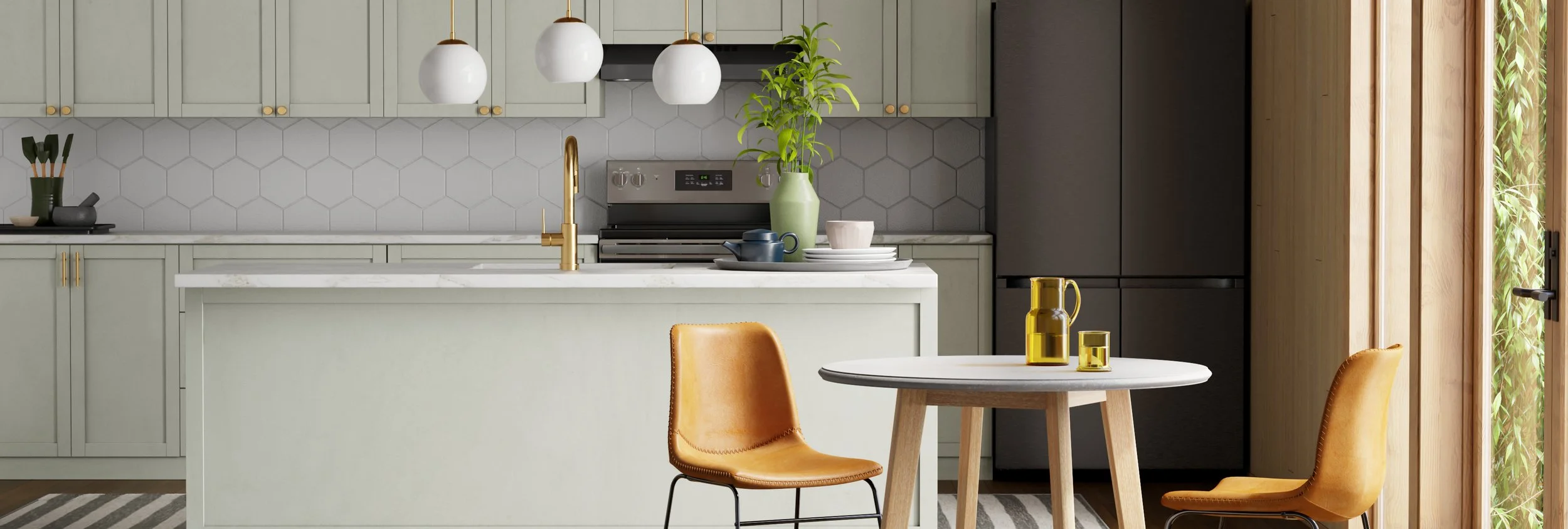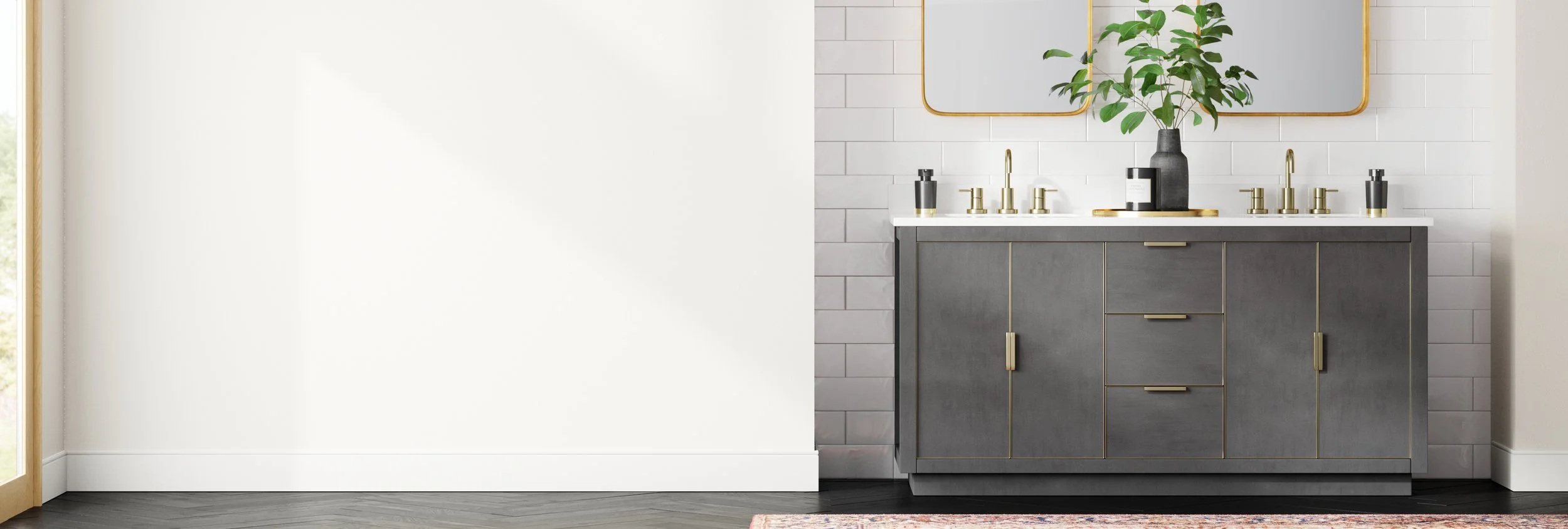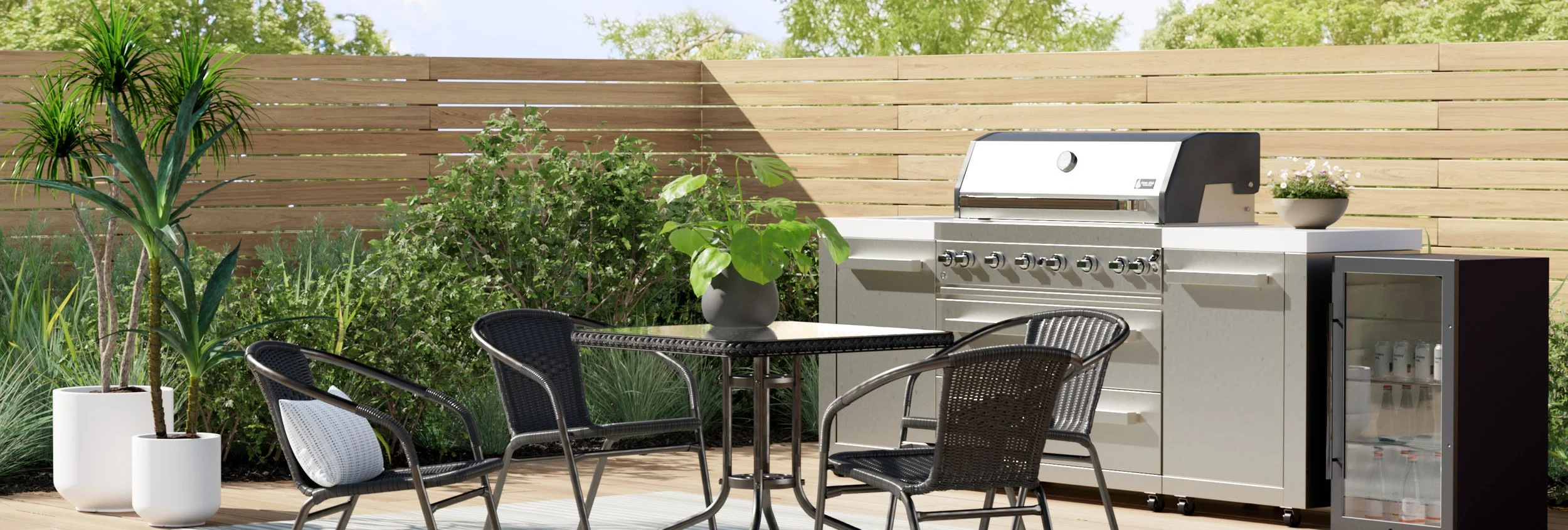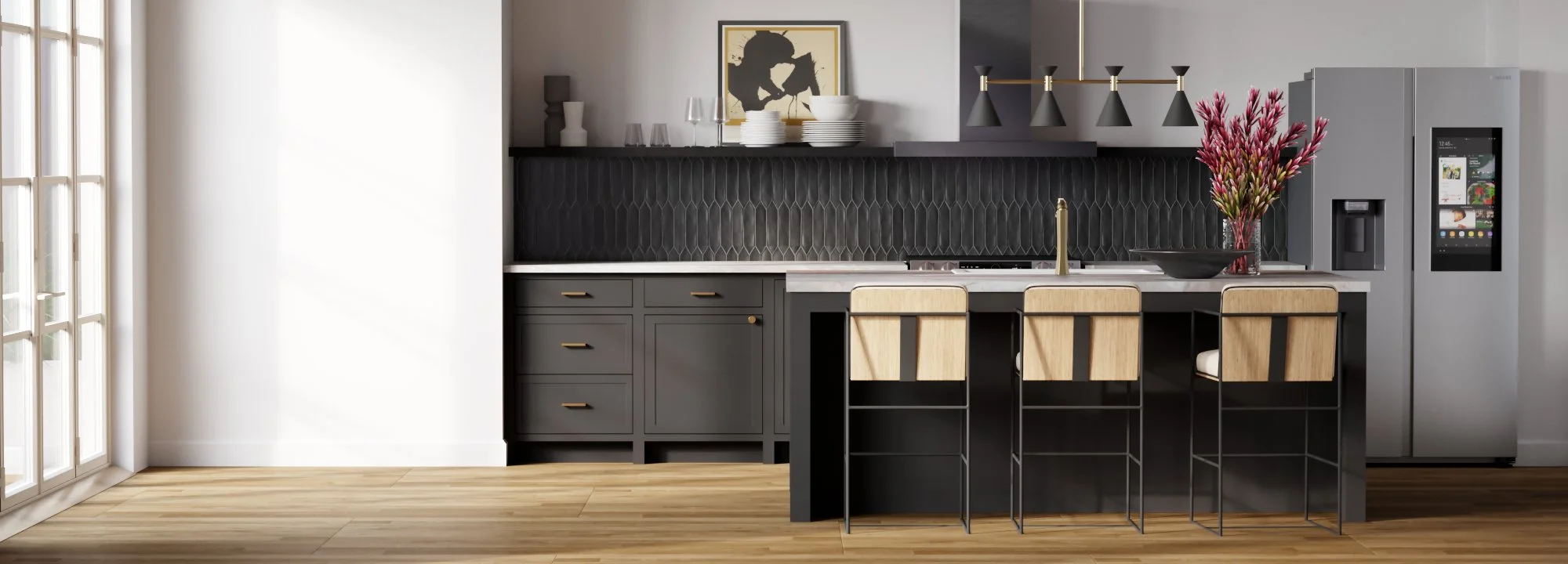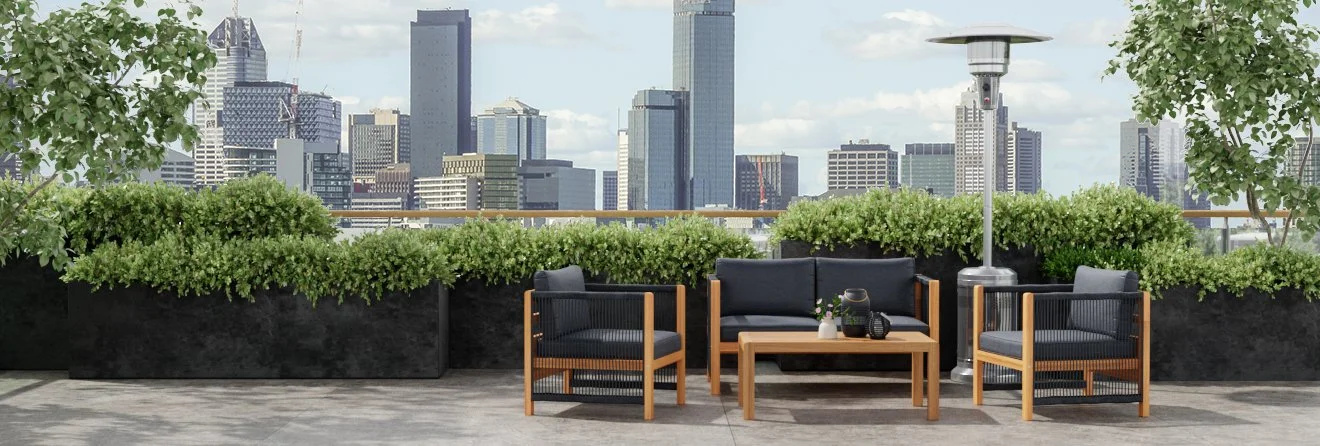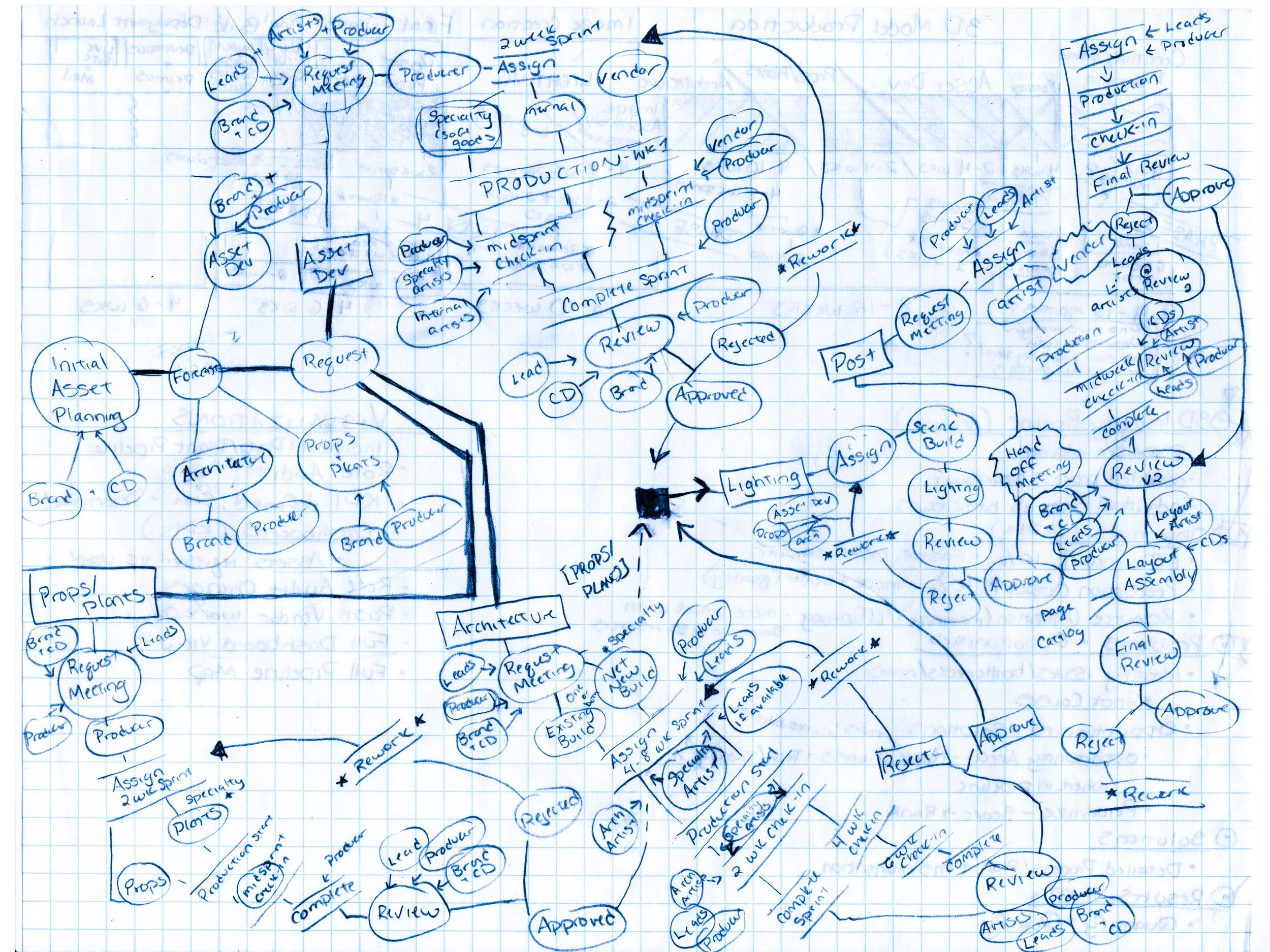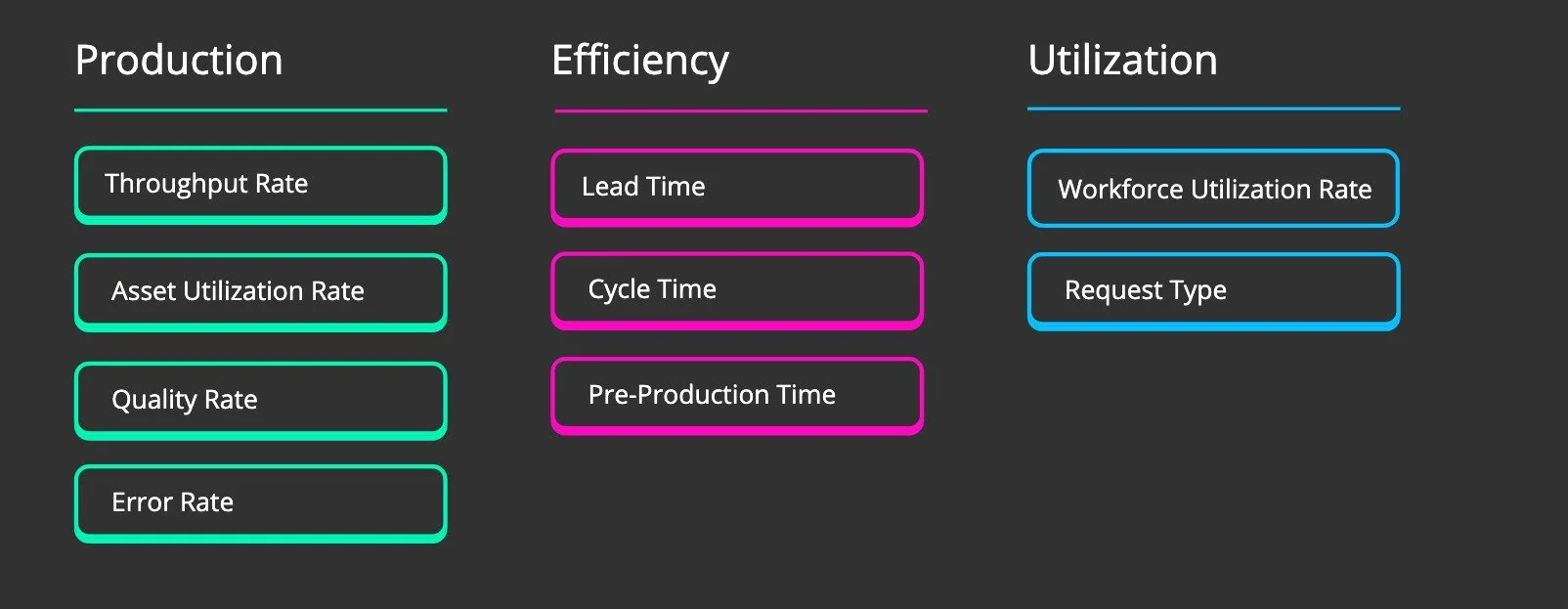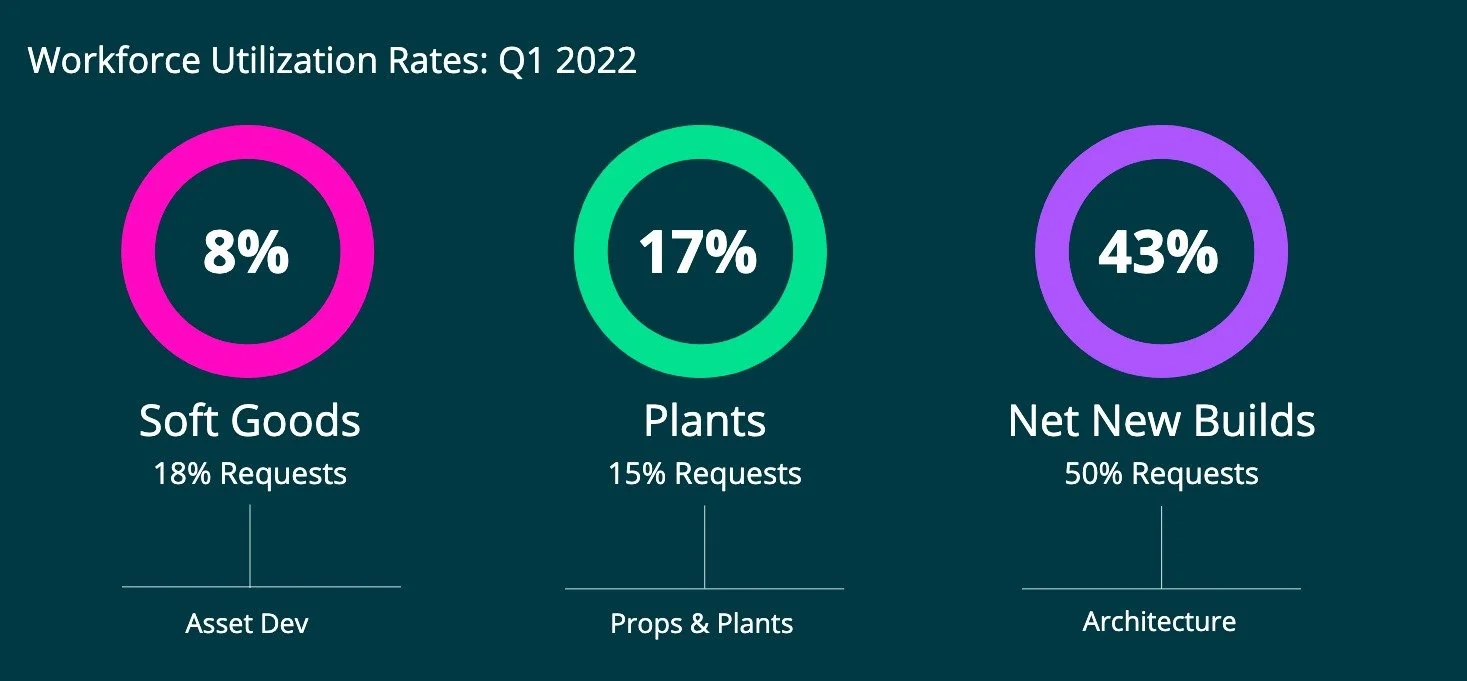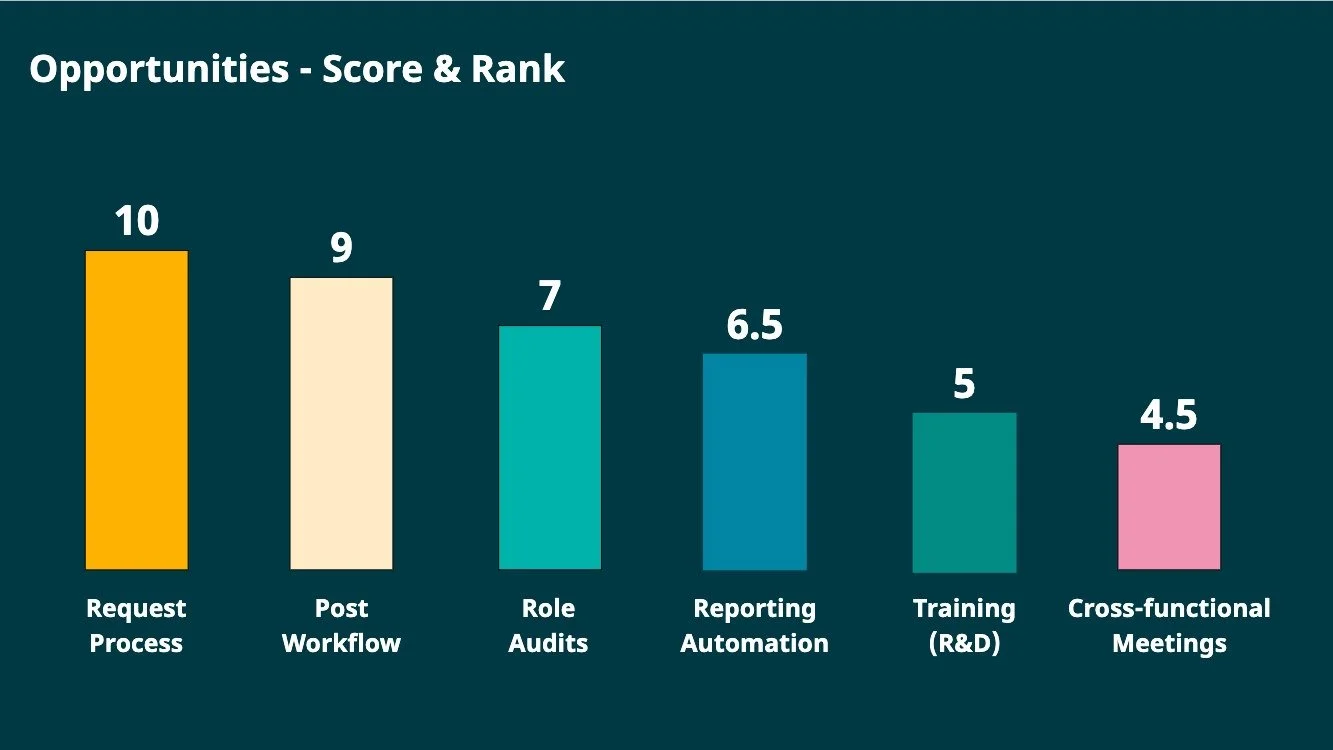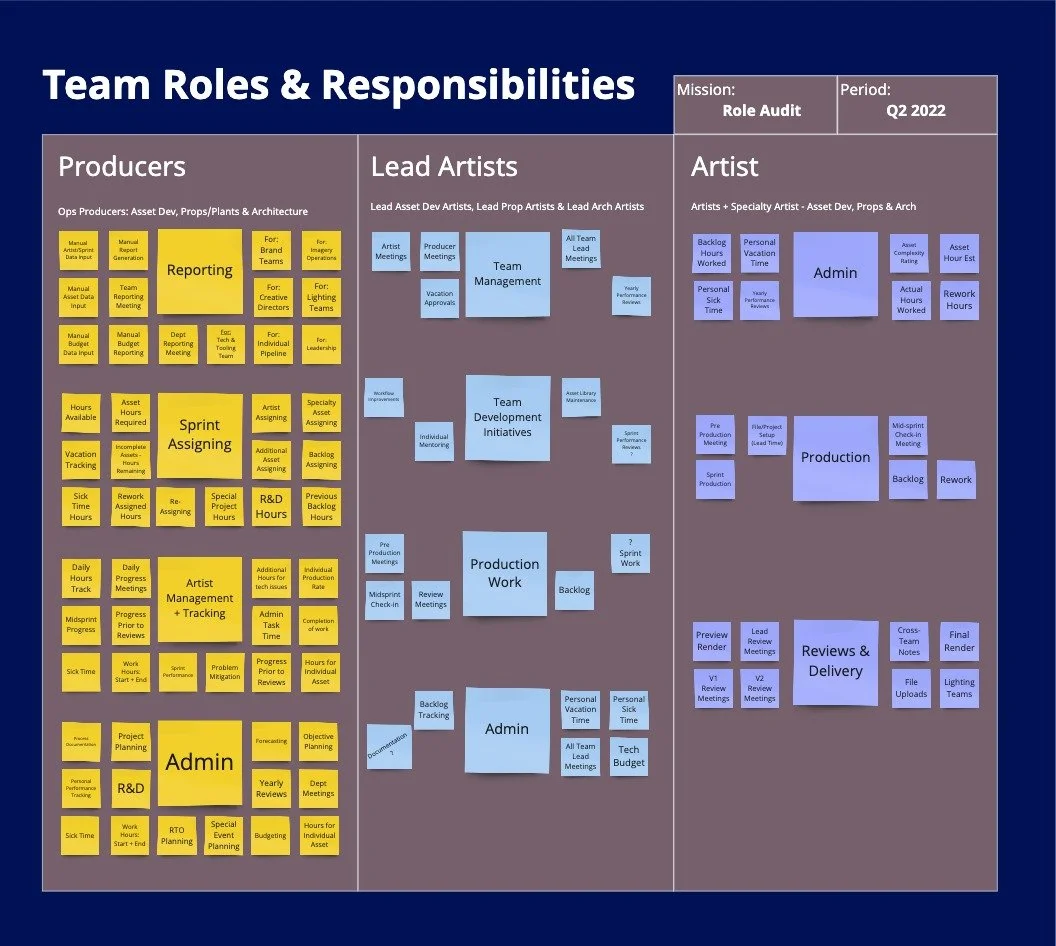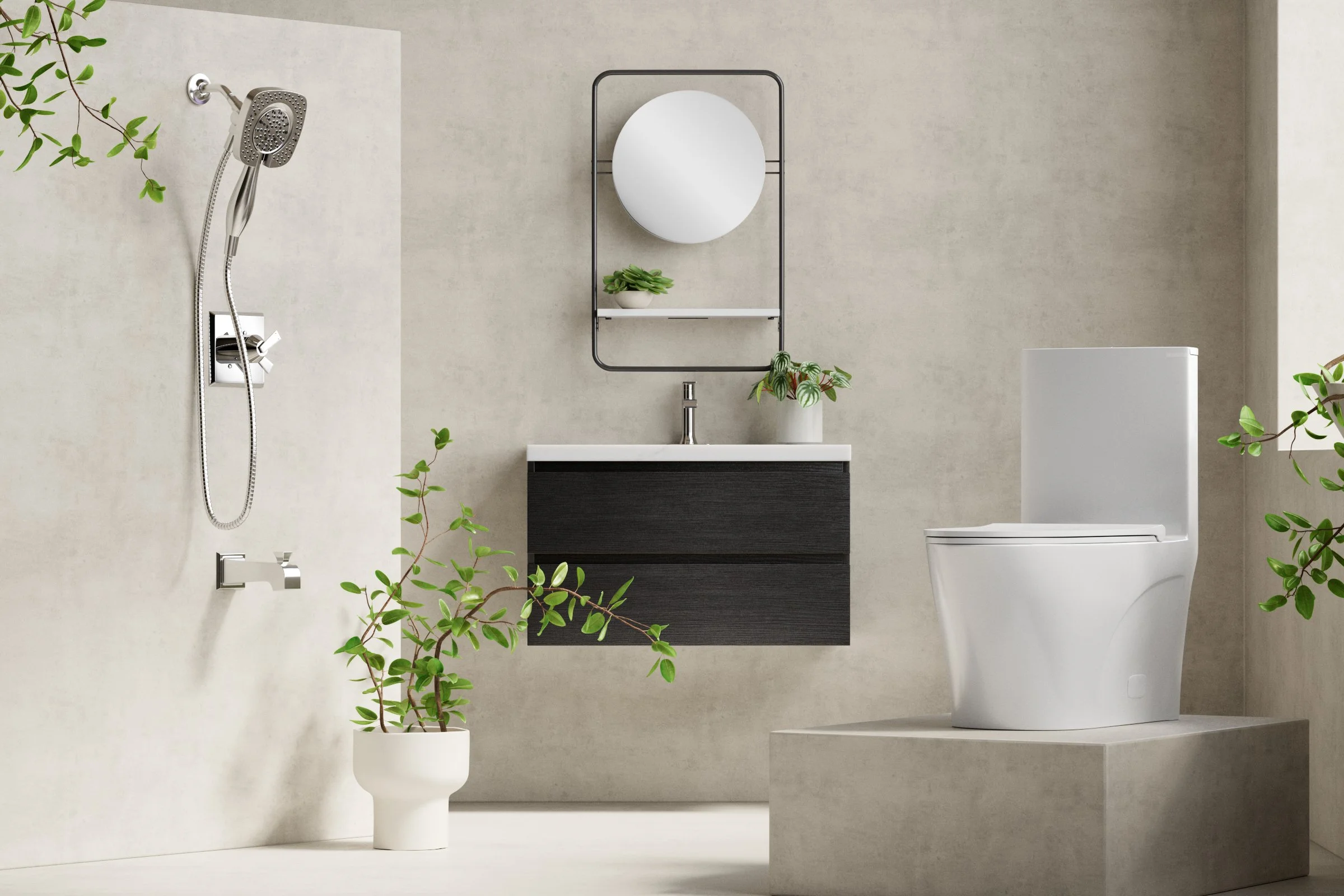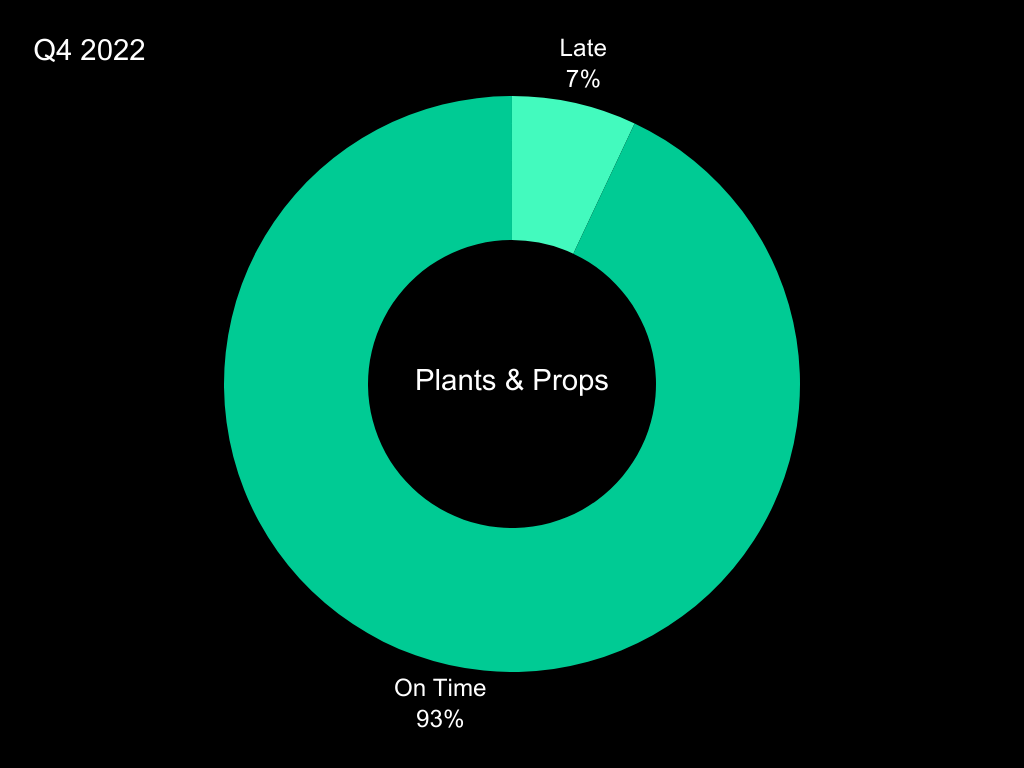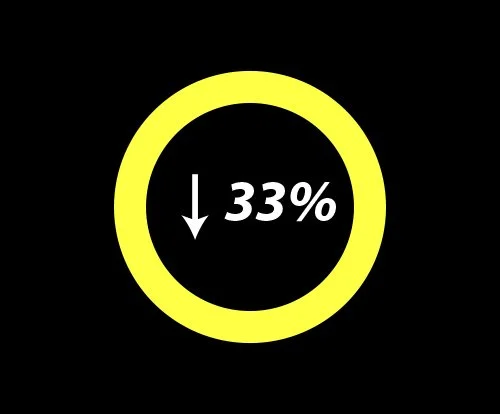Operations Case Studies
— Case Study —
Wayfair’s 3D Imagery Operations
Backstory
As Wayfair scaled, they transitioned their imagery sourcing approach from digital photography to 3D models - aiming for a more sustainable and cost-effective model. This shift not only saved time and money but also facilitated a higher production output. It produces thousands of 3D product images each year that are used across web, broadcast, social media & print.
Wayfair’s 3D Imagery Production - Full, Detailed Pipeline Map
Pipeline Breakdown ~ Phases
The complex pipeline consisted of 6 different teams and pipelines that could be broken down into 5 distinct phases. As Senior Manager of 3D Imagery Operations, I was responsible for 4 of those teams/pipelines:
Asset Dev, Props & Plants, Architecture & Post Production
Objectives:
My objectives were to maintain, scale & optimize the digital production line through improvements in production speed, cost efficiency & output quality. I oversaw day-to-day operations while strategizing for the long term. By monitoring process health & performance and identifying reoccurring trends, I pitched action-oriented solutions that achieved the yearly objectives.
Annual Objectives
Increase Overall Efficiency by 10%
Improve Production/Throughput Rate by 10%
Maximize Resource (Workforce) Utilization & Efficiency
KPIs
Problems Areas
Wayfair’s 3D Imagery Pipeline - Problem Areas
(1) Speciality 3D Asset Requests
Increasing demand vs. low workforce utilization
The 3D teams were armed with a small number of specialty artists based on the initial demand. However, as the pipeline evolved, our demand started to outweigh our resources. With a low workforce utilization rate on specialty requests, we faced a severe bottleneck on certain projects.
For example: Only 17% of our Props & Plants team could be utilized for plant requests rendering 83% of the team dormant.
(2) Post Production Pipeline



Demand vs Resources
Increasing demand vs. low workforce resources
The Post Team handled editing & retouching for ALL images generated by the entire pipeline. With 3D production rate steadily increasing, more images were funneling faster into the smallest team (6 artists) in the Imagery pipeline, Post faced an insurmountable number of deliverables without the proper resources to execute - creating another bottleneck at the end of line
Inefficient Review Process
Too many touch points → delays & reduced turn-around-time
Post Production (Image Retouching) consisted of 3 rounds with Brand Teams & Creative Directors who had limited bandwidth & busy schedules. This created delays in scheduling which increased TaT & reduced production rate.
(3) 3D Asset Request Process
Low Asset Utilization
Due to a rushed pre-production process, Brand Teams & Creative Directors were requesting a disproportionate amount of 3D assets compared to the number of those assets that actually appeared in imagery at the end.
(4) Cross-Functional Processes
Inefficient cross-functional workflows → longer preproduction & lead times
Since Lighting & Image Build production reported into a different team, the 3D Asset & Post teams had no insight into that phase of the pipeline & vice versa. They didn’t understand each other’s workflows so projects, models & file states were not optimized for handoffs creating contention as well as additional work which led to longer pre-production times and lead times.
(5) Manual Reporting Process
Time-consuming, manual data & reporting tasks
Producers were spending up to 40% of their time on reporting - manually inputting data and generating reports.
(6) Role Audits
Imbalanced & ineffective delegation of tasks
With a growing, complex pipeline and the constant systematic changes that accompanied it, responsibilities of Producers, Artists & Artist Leads had become unbalanced and illogical.
Producers - too many responsibilities, overly complicated reporting duties, generating unnecessary reports & reporting for teams outside their scope
Lead Artists - lack of insight into team’s sprint progress & performance
Artist - no time for professional skill development
Opportunity Areas
Now that our areas of opportunity were identified, I needed to assess (quantify & qualify) the expected impact on our objectives. I reviewed current baselines and metrics for past (comparable) optimization initiatives to estimate the potential impacts. Comparing that to the investment required (cost, time, disruption, etc.) helped me gauge which solutions were most viable.
I created a scoring system to simplifying my findings so I could prioritize which areas should be addressed first. I built a solid business case and successfully pitched my recommendations to leadership.
Solutions
(1) Request Process: 3D Assets
All 3D teams implemented a new, budgeted request process that included strict parameters and held brands accountable for amount of assets not used in final imagery. This forced a systematic change in pre-production planning processes across all brands. We achieved a dramatic improvement of asset utilization while also facilitating better alignment between brand & 3D asset teams.
(2) Post Production Workflow
New External Vendor Pipeline
We found huge cost and time efficiencies in using vendors vs. hiring full-time employees. However, the quality was not matched so we implemented a new vendor pipeline with QA guardrails allowing the internal team to focus on optimizing image quality.
Vendors were responsible for all basic edits early in the process. Projects were then transferred back to the internal team for completion.
This new process allowed the team to maintain quality control while meeting the demand - all with a comparatively small cost investment compared to other options.
Post Production Review Process
We did a complete overhaul of our review process -redefining the role of brand teams & creative directors to be more efficient. We also implemented strict parameters in the request process which reduced the number of net new requests.
Initial reviews (mid-sprint check-in’s & V1s) were handled by lead artists - checking for technical accuracies & quality assurance while ensuring all requests had been met.
We replaced gated reviews with ad hoc aka “rolling reviews” for V1s to keep production moving.
The brand teams were sent images ahead of the V2 Review and submitted any feedback to be executed prior to the meeting.
By the time of the final review, after webpage & catalog layout, edit requests (if any) were minimal.
(3) Role Audits
In conjunction with the parties involved, we completed a thorough audit of all tasks and responsibilities for Producers, Lead Artists & Internal Artist on the 3D Asset teams.
Producers
Shifted majority of sprint assigning & tracking duties to Lead Artists creating balanced workloads
Reduced data & reporting tasks dramatically with automated reporting
Removed unnecessary reports & reporting for teams outside their scope
Lead Artists
Simplified assigning tasks & improved tooling for a more streamlined sprint assigning & tracking process
Took on sprint assigning & tracking duties which provided insight into the team’s progress & performance → able to manage artists more effectively once armed with the appropriate data
Simplified & assumed basic admin duties for their team. Doing these tasks in bulk vs. individually by artists → dramatic time savings
3D Asset Artists
Assumed accountability for their sprint progress & deadlines → better performance
Removed majority of admin duties → able to reallocate this time to R&D initiatives to solve for the Speciality Request problem
(4) Tooling & Tech - Reporting Automation
Wayfair was in the process of building a custom production & project management tool (ShotGrid) so leadership wasn’t prepared to invest in interim solutions. I explored free automation solutions that integrated with our existing spreadsheet system so I collaborated with a rep from the Tech & Tooling team to deploy easy automations for basic data input, synchronization, dashboards & reports.
(5) Training & Skill Development (R&D): Speciality 3D Asset Requests
I spearheaded a new training (R&D) program to meet the demand of specialty asset production. It was most cost effective to develop the skills of our existing team (vs. hiring or vendors) because with a higher workforce utilization rate, we could easily meet the demand without investing in additional resources.
In collaboration with the specialty artists & team leads, we identified & prioritized the skill sets that would have the most impact. Specialty artists took the lead on developing the curriculums for a specific skill sets.
Curriculum: training courses, assignments and 1-on-1 mentoring
Format Options: instructor-led, video and written training courses (for schedule flexibility)
By reallocating the time budgeted for admin tasks to R&D, we avoided interference with production work. We carefully selected participants based on certain criteria, grouped them into teams and offset their training schedules to ensure they still met the production demand.
Workforce Utilization: Props & Plants Opportunity - Pitch Graphic
Cross-Functional Insight Meetings
I implemented bi-monthly cross-functional meetings between the teams in which they presented their workflows, brainstormed on process improvements and showcased their work. They quickly realized they could optimize their handoffs with very little effort saving large amounts of time and work for the next team. Through these meetings, they began to develop positive relationships and became more engaged in their work, now that they could grasp the bigger picture.
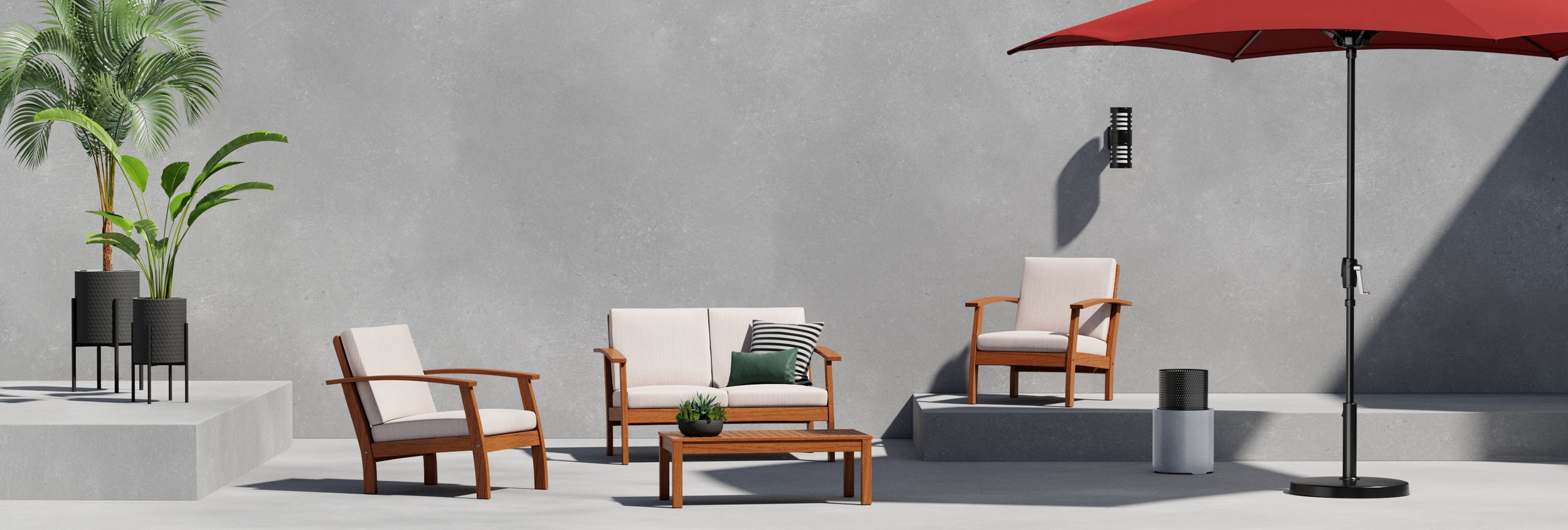



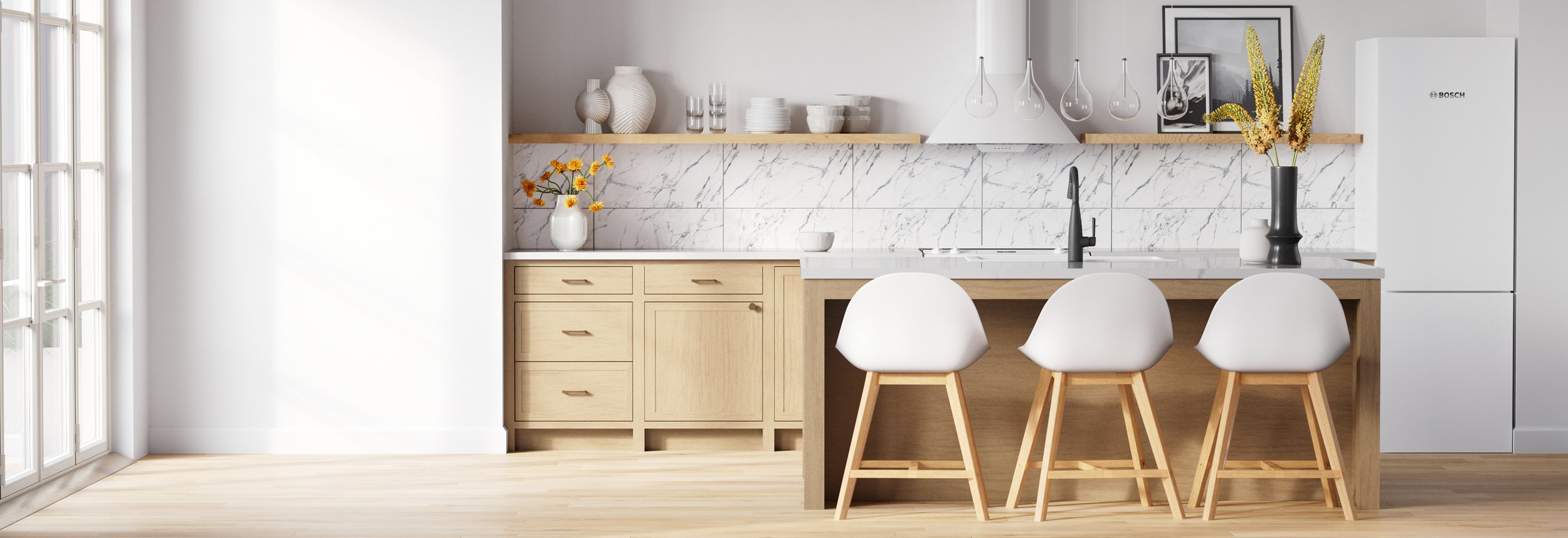
Results
Annual Objectives:
Increased Overall Efficiency by 10%
Increased Overall Production Rate by 10%
Increased Workforce Utilization by 250% (average across 3D pipelines)
3D Asset Production - Overview Dashboard
(1) Request Process: 3D Assets
Forced the development of streamlined & effective pre-production planning for all brand teams. This resulted in a dramatic improvement of asset utilization while also facilitating better alignment between brand & 3D asset teams.
3D Asset Utilization (Q1 2002 - Q3 2022) Results
(2) Post Production Pipeline - New Vendor Workflow + Review Process
Post Production - Overview Dashboard
(3) Role Audits
By shifting responsibilities & simplifying processes, we were able to balance workloads, optimize workflows and implement time efficiencies across the 3D asset teams. One of the most notable differences was in the On Time vs Late rates.
(4) Tooling & Tech - Reporting Automation
Reporting Automation
Reduced reporting tasks & duties for 3D Asset Producers by 33% across the board.
(5) Training & Skill Development (R&D): Speciality 3D Asset Requests


(6) Cross-Functional Insight Meetings
Optimized 3D Asset & Lighting deliverables - reducing pre-production time (model/file setup) & lead time for both the Lighting & Post Production Teams.
Pre-Production Time Efficiencies:
Lighting: 4 days → 1.5 days & Post: 2 days → .33 days


